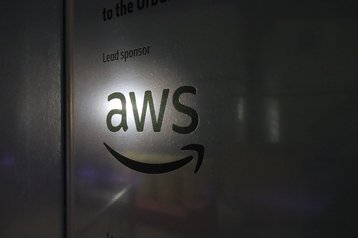Amazon Web Services (AWS) announced a robust $26.3 billion in revenue for Q2 2024, marking an 18.8 percent increase year-over-year. Although this represents an acceleration from the 17.2 percent growth recorded in the previous quarter, AWS’s growth rate remains slower compared to its main competitors, Microsoft Azure and Google Cloud, both of which reported a 29 percent growth for the same period.
AWS’s operating income was $9.334 billion, contributing significantly to Amazon’s total quarterly income of $14.672 billion. The operating margin for AWS improved to the mid-30 percent range, up from the mid-20s a year ago.
Amazon CEO Andy Jassy expressed confidence in AWS’s trajectory, projecting an annual revenue of $105 billion for the cloud unit. He attributed the recent slowdown in growth to a global economic downturn but noted positive signs as customers shift focus from cost optimization to infrastructure modernization and increased spending on Artificial Intelligence (AI) systems.
Jassy highlighted a notable trend: “Customers have completed the significant majority of their cost optimization efforts and are focused again on new efforts,” he said. He anticipates that IT spending, which is currently largely on-premises, will progressively move to the cloud over time.
On the subject of AI, Jassy mentioned AWS’s strong partnership with Nvidia and its extensive range of Nvidia instances. However, he acknowledged customer feedback calling for better price performance, leading AWS to invest in its custom silicon chips, Trainium and Inferentia, with new generations expected later this year. “A lot of times, it’s hard to get that price performance from existing players unless you decide to optimize yourself for what you’re learning from your customers and you push that envelope yourself,” Jassy noted. With this move, Amazon joins companies such as Google and Microsoft that are developing custom chips, Cobalt and Trillium TPUs.
In terms of capital expenditures, Amazon spent $30.5 billion on infrastructure in the first half of 2024. The company is on track to surpass last year’s total capex of $48.4 billion, with increased investments expected in the latter half of the year to support growing demand in both generative AI and non-generative AI workloads. Brian Olsavsky, Amazon’s Senior Vice President and CFO, stated, “Looking ahead to the rest of 2024, we expect capital investments to be higher in the second half of the year. The majority of the spend will be to support the growing need for AWS infrastructure.”

AWS’s infrastructure now includes 35 regions and 110 availability zones. Jassy discussed the challenges of balancing investment, emphasizing that AWS’s capacity planning involves maintaining more infrastructure than immediately necessary to avoid service disruptions. “If you end up actually with too little capacity, then you have service disruptions, which really nobody does because it means companies can’t scale their applications. So most companies deliver more capacity than they need,” Jassy explained.
Regarding Amazon’s Project Kuiper, an initiative to deploy thousands of satellites to provide global internet coverage, manufacturing has ramped up significantly. The project continues to attract substantial interest from enterprise and government clients.




